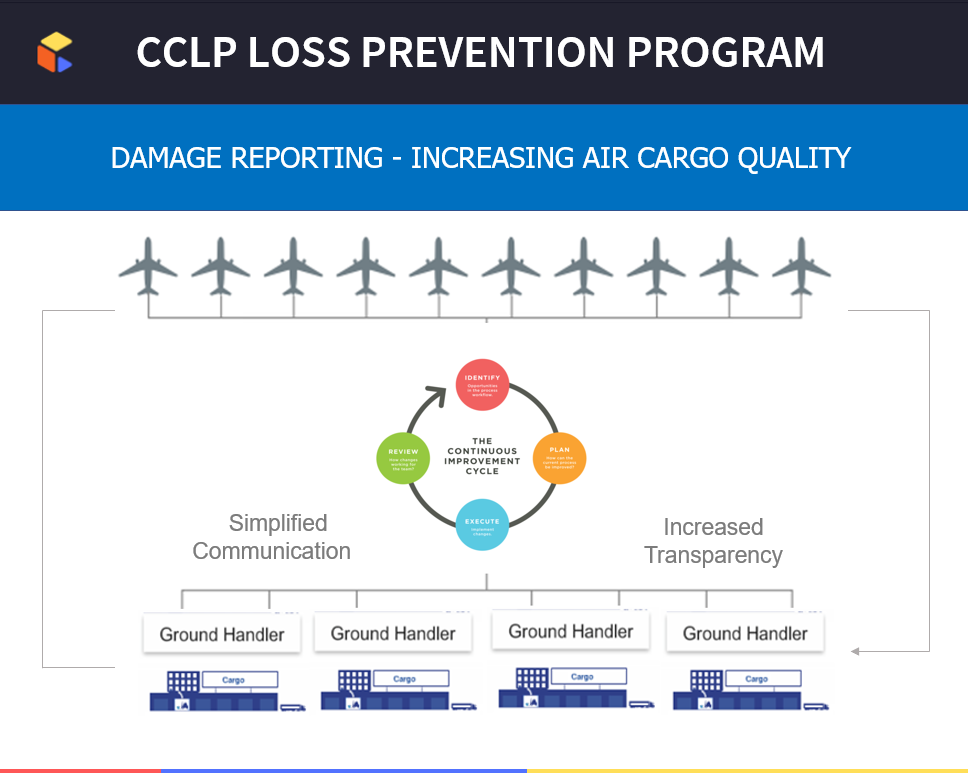
Shipping cargo from one location to another anywhere in the world, a shipment may suffer damage during transport. As a result, customer care and administrative procedures initiated by shippers, consignees, or companies acting on their behalf, attempting to recover any potential the loss. Consequently airlines are compelled to deal with cargo damage investigations and claims.
In many cases it is not easy to identify where and how exactlty cargo got damaged. In order to get a clear picture on where and how damage occured, business partners involved in the transport and handling of shipments need a have a proper cargo damage reporting procedure and loss prevention program. Damages may affect the quality and value of customers goods. Customers therefore need to be notified in time as adequate measurements or specific instructions might be applicable in order to minimize potential loss or health risks. ( for example with pharmaceuticals).
By registering cargo damages in an early stage and investigating the root cause of incidents, an active loss prevention program is in place which will help both handling companies and airlines to improve quality of the air cargo product. However, the damage reporting proces is not standardized within the air cargo industry. Still a huge number of paper reports are being drafted end send by email to the involved stakeholders without any clear reporting structure.
Lack of industry standards in damage reporting can negatively affect an effective quality approach in several ways:
1. Inconsistent reporting
Without standardized reporting procedures, different airlines and air cargo companies may use different terminology, formats, and criteria to report cargo damage. This can lead to inconsistencies in reporting, making it difficult to compare data and identify trends. In turn, this can hinder efforts to develop effective quality improvement strategies.
2. Incomplete information
Inconsistencies in reporting can also result in incomplete information about cargo damage. For example, if one company only reports damage to the exterior of a package, while another company reports both exterior and interior damage, it can be difficult to assess the full extent of the damage.
3. Difficulty in identifying root causes
Standardized reporting procedures can help identify the root causes of cargo damage. Without consistent data, it may be difficult to identify patterns or trends that could indicate underlying problems with packaging, handling procedures, or other factors.
4. Impacts on customer satisfaction
Lack of standardized reporting can also impact customer satisfaction. Customers may have different expectations about how damage is reported, which can lead to confusion and frustration if their expectations are not met. Additionally, inconsistent reporting can make it difficult to track and resolve customer complaints about damaged cargo.
5. Compliance issues
Inconsistent reporting procedures can also create compliance issues. Regulatory bodies may require specific reporting procedures, and failure to comply with these procedures can result in fines, penalties, or other consequences.
As a result, lack of industry standardizing in damage reporting can negatively affect an effective quality approach by creating inconsistencies in reporting, incomplete information, difficulty in identifying root causes, impacts on customer satisfaction, and compliance issues. Standardized reporting procedures can help improve data quality, identify areas for improvement, and ensure compliance with regulatory requirements.
We invite ground handlers and airlines whom are interested to increase the quality of their handling service to sign up with the CCLP program.
For information please contact raoul.paul@cargohub.nl / tel:+31653 927047

